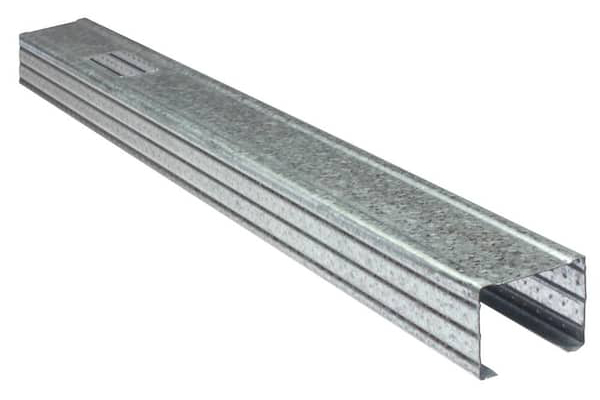In modern construction, metal studs are a popular alternative to traditional wood framing. They’re made from steel and come in various sizes and thicknesses, each suited to specific tasks. One commonly used type is the 20 gauge metal stud. But what exactly are 20 gauge metal studs, and where are they typically used?
Let’s explore their properties, advantages, and common applications in residential, commercial, and industrial construction.
What Does “20 Gauge” Mean?
In construction, gauge refers to the thickness of the metal. The higher the gauge number, the thinner the metal. Therefore, a 20 gauge metal stud is thinner than, say, a 16 gauge stud, but thicker than a 25 gauge.
Specifically, a 20 gauge stud is about 0.0312 inches (0.79 mm) thick. This makes it stronger and more durable than lighter gauges (like 25 gauge), but not as heavy-duty as thicker ones (like 16 or 14 gauge). It strikes a balance between strength and ease of handling.

What Are Metal Studs Made Of?
Metal studs, including the 20 gauge variety, are usually made from galvanized steel, which means they are coated in zinc to protect against rust and corrosion. This makes them ideal for environments where moisture or humidity might damage wood framing.
Common Uses of 20 Gauge Metal Studs
20 gauge metal studs are considered mid-weight framing members. They are used in a wide range of building applications, especially where added strength and fire resistance are needed. Here are some common uses:
1. Interior Non-Load Bearing Walls
One of the most common uses of 20 gauge studs is for interior partition walls in both residential and commercial buildings. They are ideal for constructing walls that divide rooms, offices, or hallways — especially when more strength is required than what lighter studs can offer.
2. Shaft Walls and Stairwells
In multi-story buildings, shaft walls (around elevator shafts or mechanical systems) and stairwells often require durable materials with fire resistance. 20 gauge studs are frequently used in these applications because of their strength and compliance with fire safety codes when combined with the right wallboard materials.
3. Tall Walls and High Ceilings
When constructing taller walls, such as in gyms, schools, or warehouses, thinner metal studs can become too flexible and prone to bowing. 20 gauge studs provide the extra rigidity needed to keep the walls straight and secure, even over larger spans.
4. Support for Heavier Fixtures
If a wall will support heavy items like wall-mounted TVs, cabinets, plumbing fixtures, or shelves, a stronger stud is necessary. 20 gauge studs offer better load capacity than lighter alternatives, making them suitable for walls that bear moderate weight.
5. Fire-Rated Wall Assemblies
Steel studs do not burn, and when used with fire-rated drywall, they help meet building code requirements for fire-resistant construction. 20 gauge studs are often chosen for these assemblies because they offer good structural integrity along with fire safety benefits.
Advantages of Using 20 Gauge Metal Studs
-
Durability: Stronger than light gauge studs, but still relatively easy to work with.
-
Fire Resistance: Steel does not combust, making it safer in fire-prone areas.
-
Termite and Mold Resistant: Unlike wood, metal studs are not susceptible to pests or moisture damage.
-
Consistency: Metal studs are straight and uniform in size, unlike wood which can warp or twist.
Conclusion
20 gauge metal studs offer a versatile solution for a variety of building needs. Stronger than lightweight framing options, but still manageable for construction crews, they are widely used in both residential and commercial projects. Whether you’re building tall partitions, securing heavy wall fixtures, or meeting fire codes, 20 gauge studs provide the strength and reliability that many modern structures demand.
As building materials continue to evolve, metal studs — particularly in the 20 gauge range — remain a go-to choice for durable, efficient, and fire-resistant framing.
Post time: Apr-17-2025





